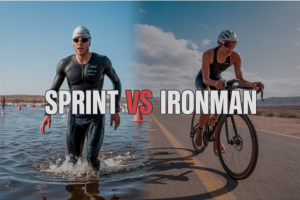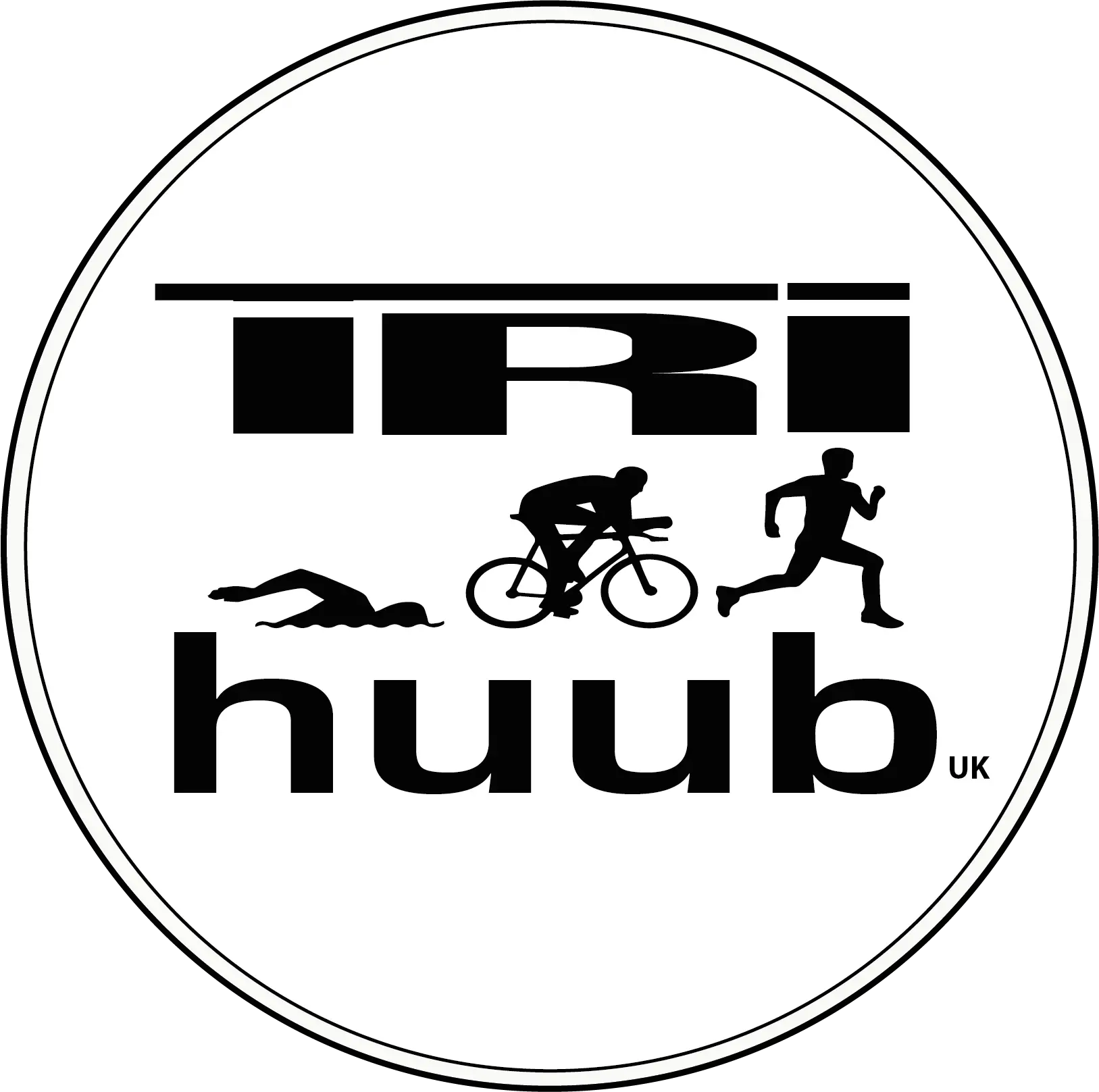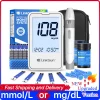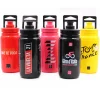Sprint vs. Ironman: Which Triathlon Distance Is Right for You?

Choosing between a sprint triathlon vs ironman can feel overwhelming when you’re trying to figure out which triathlon distance to choose. This comprehensive triathlon distance comparison is designed for both complete beginners wondering about their first race and experienced athletes considering a step up in challenge.
Sprint triathlons offer a perfect entry point with manageable distances and sprint triathlon training time that fits most schedules. Ironman races represent the ultimate endurance test, demanding serious ironman training requirements and lifestyle changes. The gap between these two race formats goes far beyond just distance.
We’ll break down the key differences in training commitment, from sprint triathlon for beginners requiring 6-8 hours per week to full ironman preparation demanding 15-20 hours weekly. You’ll also discover how your triathlon training commitment affects your wallet, family time, and race day experience. By the end, you’ll know exactly which triathlon race distances match your current fitness level, available time, and long-term goals.
Understanding Sprint Triathlon Distance and Requirements
Race Distances Breakdown: 750m Swim, 20km Bike, 5km Run
The sprint triathlon distance represents the perfect entry point for aspiring triathletes. The swimming portion covers 750 meters (roughly 0.47 miles), typically completed in open water like lakes or oceans, though some races use pools. This distance feels manageable for most recreational swimmers and doesn’t require the extensive endurance needed for longer formats.
The cycling segment spans 20 kilometers (12.4 miles), which most people can complete in 45-60 minutes depending on terrain and fitness level. The relatively short distance means you won’t need to master complex nutrition strategies or worry about mechanical issues that plague longer races.
The final 5-kilometer run (3.1 miles) caps off the race. While your legs will feel different after swimming and cycling, this distance remains within reach for most people who can already run a 5K comfortably.
Time Commitment for Training and Race Completion
Sprint triathlon training time typically ranges from 6-12 hours per week, making it realistic for busy professionals and parents. Most training programs span 8-12 weeks, focusing on building basic endurance across all three disciplines while practicing transitions.
Race completion times vary significantly based on fitness level and experience:
Athlete Level | Typical Finish Time |
Beginner | 1:30 – 2:00 hours |
Intermediate | 1:15 – 1:30 hours |
Advanced | Under 1:15 hours |
Elite | Under 1:00 hour |
The beauty of sprint distance lies in its accessibility – even complete beginners can often finish their first race within two hours with just 2-3 months of consistent training.
Equipment Essentials for Beginners
Getting started doesn’t require breaking the bank. Essential gear includes:
Swimming Equipment:
- Wetsuit (for open water races, though not always mandatory)
- Goggles designed for open water swimming
- Swim cap (usually provided by race organizers)
Cycling Gear:
- Road bike, hybrid, or even mountain bike (aerodynamic equipment isn’t necessary)
- Properly fitted helmet (mandatory for all races)
- Basic repair kit with spare tube and tire levers
- Water bottle and cage
Running Equipment:
- Quality running shoes suited to your gait
- Moisture-wicking athletic clothing
- Race belt for attaching your bib number
Transition Essentials:
- Towel for drying feet
- Elastic laces for quick shoe changes
- Simple nutrition like energy gels or sports drinks
Many beginners successfully complete their first sprint triathlon with equipment they already own, gradually upgrading gear as their interest and commitment grow.
Physical Fitness Baseline Needed
The sprint triathlon for beginners requires a modest fitness foundation rather than elite athleticism. You should be comfortable swimming 500-750 meters continuously without stopping, even if your pace is leisurely. Many people achieve this baseline within 4-6 weeks of regular pool sessions.
For cycling, being able to ride 20-25 kilometers comfortably at a conversational pace provides adequate preparation. This typically translates to 60-90 minutes of continuous riding without significant fatigue.
The running component requires the ability to complete a 5K distance, whether through running, walking, or a combination of both. If you can currently walk briskly for 30-45 minutes, you likely have sufficient base fitness to begin sprint triathlon training.
Most training programs assume you can complete each discipline individually before focusing on combining them and improving transitions. The key lies in consistent, gradual progression rather than starting from peak fitness in any single sport.
Understanding Ironman Triathlon Distance and Requirements
Race distances breakdown: 3.8km swim, 180km bike, 42.2km run
The Ironman triathlon distance represents the pinnacle of endurance racing, covering a total of 226.2 kilometers (140.6 miles) across three disciplines. The swim portion spans 3.8 kilometers (2.4 miles) in open water, typically lakes or oceans where athletes must navigate without lane ropes or pool walls. The cycling leg covers 180 kilometers (112 miles) on roads that often feature challenging terrain, including hills, headwinds, and varying weather conditions. The final marathon run stretches 42.2 kilometers (26.2 miles), completed after already swimming and cycling for hours.
Athletes must complete the entire race within a strict 17-hour cutoff time, with specific intermediate cutoffs at each discipline. The swim must be finished within 2 hours and 20 minutes, while the bike and swim combined require completion within 10 hours and 30 minutes. This leaves athletes roughly 6.5 hours to complete the marathon run portion.
Training volume and time investment required
Ironman training requirements dwarf those of sprint triathlon training time, demanding 15-25 hours per week over 6-12 months. Most first-time Ironman athletes need at least 20 weeks of structured preparation, with experienced athletes often training year-round to maintain their fitness base.
Weekly training typically includes:
- Swimming: 3-5 sessions totaling 8,000-15,000 meters
- Cycling: 3-4 rides covering 200-400 kilometers weekly
- Running: 4-6 runs accumulating 50-80 kilometers per week
- Brick workouts: Combined bike-run sessions 1-2 times weekly
- Long sessions: Weekend workouts lasting 4-7 hours
Peak training weeks often feature back-to-back long days, such as a 6-hour bike ride followed by a 2-hour run the next day. Athletes must master pacing strategies, as going too hard early in any discipline can derail the entire race experience.
Advanced equipment and nutrition needs
The Ironman training requirements extend far beyond basic gear, demanding specialized equipment investments. Aerodynamic components become crucial for the lengthy bike portion, including aero wheels, tri-bars, and fitted tri-suits. Many athletes invest in power meters to monitor cycling output and GPS watches with advanced metrics tracking.
Nutrition planning becomes incredibly complex, requiring athletes to consume 200-400 calories per hour during the race while maintaining electrolyte balance. Training the gut to process fuel during exercise becomes as important as physical conditioning. Athletes must practice their race-day nutrition strategy during long training sessions, testing different combinations of:
- Energy gels, bars, and liquid calories
- Electrolyte replacement drinks
- Solid foods for the bike portion
- Caffeine timing strategies
- Hydration protocols for varying weather conditions
Equipment failures can end an Ironman attempt, so athletes often carry spare tubes, CO2 cartridges, and basic repair tools. Many invest in professional bike fits and regular equipment maintenance to prevent mechanical issues.
Mental and physical endurance demands
The psychological challenges of Ironman racing often exceed the physical demands. Athletes face multiple low points during the 8-17 hour journey, requiring mental strategies to push through fatigue, discomfort, and negative thoughts. The race becomes as much about problem-solving and mental toughness as physical fitness.
Physical preparation must address the unique demands of sustained effort at moderate intensity rather than short bursts of high power. The body must adapt to burning fat efficiently, processing nutrition during exercise, and maintaining form while fatigued. Common challenges include muscle cramping, gastrointestinal distress, and the cumulative stress of running a marathon on tired legs.
Sleep patterns, stress management, and recovery protocols become essential components of training. Many athletes work with sports psychologists to develop race-day mental strategies and coping mechanisms for the inevitable difficult moments during competition.
Training Time Commitment Comparison
Weekly training hours for sprint preparation
Sprint triathlon training time commitment typically ranges from 6-10 hours per week for most athletes. Beginners often start with 6-7 hours weekly, while more experienced athletes might push closer to 10 hours to maximize performance gains.
Your weekly schedule might include three swim sessions (2-3 hours total), three bike rides (3-4 hours), and three runs (2-3 hours). Many athletes find this manageable alongside full-time work and family commitments. The beauty of sprint triathlon training lies in its flexibility – you can often complete workouts during lunch breaks or squeeze in a 30-minute session before work.
Recovery becomes simpler with sprint preparation since your body isn’t dealing with the extreme stress of long-distance training. Most athletes can maintain this training load year-round without significant burnout risk.
Weekly training hours for Ironman preparation
Ironman training demands a completely different level of commitment, requiring 12-20 hours per week depending on your experience and goals. Peak training weeks often push toward the upper end of this range, with some elite age-group athletes training 20+ hours weekly.
Your weekly breakdown might include 4-5 swim sessions (4-6 hours), 3-4 bike rides (6-10 hours), and 4-5 runs (4-6 hours), plus strength training and recovery work. Long weekend sessions become non-negotiable – expect 4-6 hour bike rides and 2-3 hour runs during peak training phases.
Training Focus | Sprint (Weekly) | Ironman (Weekly) |
Swimming | 2-3 hours | 4-6 hours |
Cycling | 3-4 hours | 6-10 hours |
Running | 2-3 hours | 4-6 hours |
Total | 6-10 hours | 12-20 hours |
The time commitment extends beyond actual training. Nutrition planning, gear maintenance, recovery protocols, and travel to longer training venues all add significant hours to your weekly schedule.
Seasonal training periodization differences
Sprint triathlon training follows a more compressed periodization cycle. Base building phases last 4-6 weeks, followed by 4-6 weeks of build phase, and 2-3 weeks of peak/taper. You can realistically target 4-6 sprint races per season while maintaining quality training.
The shorter distance allows for more aggressive training loads relative to race demands. You might complete several sprint-distance training sessions weekly during build phases, something impossible with Ironman preparation.
Ironman periodization requires extended base periods lasting 12-16 weeks, followed by 8-12 weeks of build phase, and 3-4 weeks of taper. Most athletes target 1-2 Ironman races per year maximum, with the entire season built around these key events.
Recovery cycles differ dramatically between the two distances. Sprint athletes can bounce back from hard training weeks within days, while Ironman training requires careful attention to cumulative fatigue across months of preparation.
Financial Investment Analysis
Registration Fees and Race Costs Comparison
Sprint triathlons typically cost between $75-$250 to enter, making them the more budget-friendly option for athletes exploring triathlon distance comparison. Local sprint events often charge on the lower end, while premier races in popular destinations command higher fees. These races frequently include perks like race shirts, finisher medals, and post-race refreshments.
Ironman registration fees range from $600-$900+ depending on the location and prestige of the event. Popular races like Ironman Hawaii or European venues can exceed $1,000. The higher cost reflects the extensive course support, aid stations every few miles, professional timing systems, and comprehensive race week activities. Many Ironman events also require qualification or lottery entry, adding another layer of complexity to the sprint triathlon vs ironman decision.
Distance | Registration Fee Range | Typical Inclusions |
Sprint Triathlon | $75-$250 | Basic timing, medal, shirt |
Ironman | $600-$900+ | Extensive support, premium swag, race week events |
Equipment Budget Requirements for Each Distance
Sprint triathlon equipment needs remain relatively modest. A basic road bike ($300-$800), wetsuit ($100-$300), running shoes ($100-$150), and essential accessories like a helmet and goggles can get you started for under $1,500. Many beginners successfully complete their first sprint with borrowed or entry-level gear.
Ironman demands significantly more investment. Aerodynamic bikes with clip-on bars or full tri bikes range from $2,000-$10,000+. Quality wetsuits designed for long-distance swimming, multiple sets of running shoes for training, nutrition systems, and recovery tools push the total equipment budget to $5,000-$15,000. The extended race duration makes comfort and efficiency critical, justifying higher-quality gear investments.
Training equipment costs also differ dramatically. Sprint training requires basic items, while Ironman preparation often includes power meters ($400-$1,200), indoor trainers ($300-$1,500), and specialized nutrition products for long training sessions.
Training Camp and Coaching Investment Needs
Sprint triathlon training can be self-guided using free online resources and training apps. Many athletes successfully prepare without professional coaching, spending perhaps $30-$100 monthly on training platforms or apps. Group training sessions at local clubs provide affordable coaching alternatives at $20-$50 per session.
Ironman training typically benefits from professional guidance due to the complexity of balancing three disciplines over extended training periods. Personal coaching ranges from $150-$500 monthly, while comprehensive training camps cost $1,500-$5,000 per week. These camps provide structured training, technique refinement, and race strategy development that proves valuable for first-time Ironman athletes.
Training camp options for sprint athletes focus on technique improvement and cost $500-$1,500 for weekend workshops. Ironman camps offer immersive experiences with nutrition planning, pacing strategies, and mental preparation components that justify the higher investment.
Travel and Accommodation Expenses
Sprint triathlons often occur within driving distance, minimizing travel costs to under $200 for gas and local accommodations. Many athletes return home the same day, especially for local events. Race weekend expenses typically include meals and perhaps one night’s lodging.
Ironman events frequently require air travel, multi-night accommodations, and extended stays for bike shipping and race week activities. Total travel expenses range from $1,000-$5,000 depending on destination and accommodation preferences. Popular Ironman locations like Hawaii, Nice, or Whistler command premium prices during race week, with hotel rooms often booked a year in advance.
International Ironman races add passport fees, currency exchange considerations, and potential equipment shipping costs that can add $500-$2,000 to the total expense. The week-long commitment for most destination Ironman events significantly impacts the overall financial investment compared to sprint triathlon options.
Physical and Mental Readiness Assessment
Injury Risk Factors for Each Distance
Sprint triathlons present a different injury profile compared to Ironman races. The shorter, more intense nature of sprint distance means you’re more likely to experience acute injuries from pushing hard during the race itself. Muscle strains, cramps, and minor cuts from quick transitions are common. Your body operates at higher intensity levels for shorter periods, which can stress joints and muscles differently.
Ironman training and racing brings its own set of concerns. The sheer volume of training hours increases your exposure to overuse injuries. Stress fractures, IT band syndrome, and chronic knee issues become more prevalent when you’re logging 15-20 hours of training per week. Your body experiences cumulative fatigue that can mask developing problems until they become serious.
The bike portion creates unique risks for both distances. Sprint athletes might crash due to aggressive positioning and faster speeds in tight pack situations. Ironman athletes face different challenges – spending 5-7 hours in aero position can create neck, back, and numbness issues that don’t typically affect sprint racers.
Swimming injuries vary significantly between distances. Sprint swimmers often push harder, leading to shoulder impingement from aggressive starts and turns. Ironman swimmers deal more with repetitive stress injuries from thousands of stroke repetitions during long training sessions.
Recovery Time Requirements Between Training Sessions
Your recovery needs change dramatically based on which triathlon distance you’re targeting. Sprint triathlon training allows for quicker bounce-back between sessions since individual workouts are typically shorter and less depleting. You might feel ready to train again within 12-24 hours after most sessions.
Sprint Distance Recovery Patterns:
- Easy sessions: 6-12 hours recovery
- Moderate intensity: 24-36 hours
- High-intensity intervals: 48-72 hours
- Brick workouts: 24-48 hours
Ironman training demands much longer recovery windows. Those 4-hour weekend bike rides or 2.5-hour runs create deep fatigue that requires 2-3 days to fully clear. Your glycogen stores become more depleted, muscle damage accumulates, and your nervous system needs extra time to reset.
Ironman Distance Recovery Patterns:
- Easy aerobic sessions: 24-48 hours
- Long endurance workouts: 48-96 hours
- High-intensity sessions: 72-96 hours
- Race simulation workouts: 5-7 days
Sleep becomes absolutely critical for Ironman training. You need 8-9 hours nightly to support the massive training load, while sprint athletes might manage on 7-8 hours. Missing sleep during Ironman preparation compounds fatigue and increases injury risk exponentially.
Mental Resilience Needed for Race Completion
The psychological demands of sprint versus Ironman couldn’t be more different. Sprint races test your ability to stay focused and push through discomfort for 1-2 hours. The pain is intense but brief – you know relief is coming soon. Mental toughness here means accepting high levels of physical discomfort while maintaining race tactics and pacing.
Ironman racing requires a completely different mental skill set. You’re managing motivation, energy, nutrition, and pacing decisions for 10-17 hours. The mental game becomes about problem-solving when things go wrong, staying positive during low points, and maintaining focus when your brain wants to shut down.
Training for each distance builds different mental muscles. Sprint preparation teaches you to embrace intensity and make quick decisions under pressure. Your mind learns to override the body’s desire to slow down when lactate builds up.
Ironman training is mental endurance boot camp. Those 6-hour training days teach you to stay engaged when boredom sets in, to keep moving when motivation disappears, and to break overwhelming distances into manageable chunks. You develop what athletes call “relentless forward progress” – the ability to keep going regardless of how you feel.
The fear factors differ too. Sprint racers worry about going out too hard and blowing up. Ironman athletes face deeper fears about not finishing, getting injured during the race, or hitting the wall so hard they can’t continue.
Age and Fitness Level Considerations
Your current fitness level plays a huge role in determining which triathlon distance makes sense. Complete beginners often assume sprint distance is automatically easier, but that’s not always true. Sprint races demand higher fitness levels for the intensity required, while Ironman races can be completed by walking portions if necessary.
Fitness Requirements by Age Group:
Age Range | Sprint Considerations | Ironman Considerations |
20s-30s | Can handle high intensity; recovery is quick | Prime age for first Ironman attempts |
40s-50s | May need more recovery between intense sessions | Experience and patience become advantages |
60+ | Joint health becomes priority | Completion over speed; medical clearance essential |
Cardiovascular fitness requirements differ significantly. Sprint triathletes need the ability to sustain 85-95% effort levels, similar to a hard 10K run. Your VO2 max and lactate threshold become limiting factors. If you can’t currently run a 25-minute 5K, sprint racing will feel extremely challenging.
Ironman fitness is more about aerobic base and muscular endurance. You need the ability to maintain 65-75% effort for hours. Many successful Ironman finishers couldn’t win a local sprint race, but they’ve built incredible aerobic engines that keep churning mile after mile.
Joint health considerations become crucial as you age. The repetitive nature of Ironman training can aggravate existing knee, hip, or back issues. Sprint training, while intense, involves less total volume and may be gentler on aging joints.
Previous athletic background matters too. Former runners often gravitate toward sprint distances initially since the running intensity feels familiar. Cyclists with strong aerobic bases might find Ironman more appealing since they already have the endurance foundation.
Lifestyle Integration Factors
Work-life balance impact assessment
The sprint triathlon vs ironman decision dramatically affects your daily routine and professional obligations. Sprint distance training typically requires 6-8 hours per week, allowing most athletes to maintain demanding careers without major sacrifices. You can knock out workouts before dawn or squeeze them in during lunch breaks, keeping your professional commitments intact.
Ironman preparation demands 12-20+ hours weekly, creating significant scheduling challenges. Many athletes find themselves declining business trips, missing networking events, or struggling with weekend work demands. The sheer volume means you’ll likely need to negotiate flexible schedules or consider how training affects career advancement opportunities.
Training Aspect | Sprint Distance | Ironman Distance |
Weekly Hours | 6-8 hours | 12-20+ hours |
Longest Sessions | 2-3 hours | 5-7 hours |
Weekend Impact | Minimal | Substantial |
Career Flexibility | High | Limited |
Family time and social commitment effects
Triathlon training commitment varies drastically between distances, directly impacting relationships. Sprint training allows participation in family dinners, weekend activities, and social gatherings with minimal disruption. Your partner and children won’t feel abandoned by your athletic pursuits.
Ironman training fundamentally reshapes family dynamics. Long Saturday bike rides and Sunday runs consume entire weekends. Social invitations get declined regularly, and family vacations might revolve around training schedules. Partners often become single parents during peak training blocks, managing household responsibilities while you’re logging miles.
The ripple effects extend beyond immediate family. Friends may stop inviting you to events, knowing you’ll likely decline. Birthday parties, weddings, and casual get-togethers compete with training sessions. Many Ironman athletes experience relationship strain, requiring honest conversations about priorities and expectations.
Long-term sustainability of training demands
Choosing first triathlon distance should consider your ability to maintain the lifestyle long-term. Sprint distance training integrates seamlessly into most life phases – career changes, growing families, aging bodies, and shifting priorities accommodate this manageable commitment.
Ironman training requires perfect storm conditions: stable job, supportive family, good health, and significant disposable income. Life changes like job promotions, new babies, or health issues can derail months of preparation. The all-consuming nature makes it difficult to sustain across multiple years without burnout or resentment from loved ones.
Triathlon for beginners particularly benefits from the sustainable approach sprint distance offers. You can build the sport into your life gradually, maintaining other interests and relationships while discovering your passion for triathlon. This foundation supports progression to longer distances when life circumstances align, rather than forcing an unsustainable commitment that might end your triathlon journey prematurely.
Race Day Experience Differences
Race Atmosphere and Community Aspects
Sprint triathlon events buzz with energetic excitement and nervous first-timer energy. The atmosphere feels approachable and encouraging, with lots of high-fives, cheering spectators, and athletes supporting each other throughout the day. You’ll find families camping out along the course, cowbells ringing, and a festival-like vibe that makes the whole experience feel celebratory rather than intimidating.
Ironman races create an entirely different atmosphere – one of reverence and awe. The energy is more intense and focused, with athletes who’ve trained for months or years preparing for their moment of truth. Spectators understand they’re witnessing something extraordinary, creating an almost sacred atmosphere around the event. The community aspect runs deeper here, with athletes forming bonds through shared suffering and triumph that often last years beyond race day.
Sprint events typically wrap up by mid-afternoon, allowing everyone to stick around for the post-race party. Ironman events stretch well into the night, with the famous midnight cutoff creating dramatic moments as final finishers cross the line to roaring crowds.
Support Crew Requirements and Logistics
Sprint triathlon support needs are refreshingly simple. Your crew can park once, set up a small base camp near the transition area, and easily move between swim, bike, and run portions to cheer you on. Most sprint venues are compact enough that supporters can see you multiple times without complex logistics planning.
Ironman support crews need military-level coordination. They’ll drive hundreds of miles following the bike course, coordinate meeting points, manage nutrition handoffs, and potentially camp out for 12+ hours. Many crews create detailed spreadsheets tracking your expected arrival times at various aid stations. Some hire professional support services or coordinate with multiple family members to cover different course sections.
Aspect | Sprint Triathlon | Ironman Triathlon |
Crew size needed | 1-2 people | 3-6 people |
Travel distance | Minimal | 100+ miles |
Time commitment | 4-6 hours | 12-17 hours |
Logistics complexity | Low | High |
Post-Race Recovery Timeline Comparison
Sprint triathlon recovery happens fast. Most athletes feel ready for normal activities within 24-48 hours. You might experience some muscle soreness, but nothing that prevents you from returning to work Monday morning or playing with your kids the next day. Many people actually feel energized and accomplished, riding the endorphin high for days.
Ironman recovery is a completely different beast. Your body needs 2-4 weeks minimum to recover from the physical trauma. Many athletes experience what’s called “Ironman blues” – a combination of physical exhaustion and emotional comedown after achieving such a massive goal. Sleep patterns get disrupted, immune systems take hits, and some people need time off work.
The first week post-Ironman often involves sleeping 10+ hours nightly, gentle walking instead of running, and focusing on nutrition to repair muscle damage. Sprint athletes are usually back to regular training within a week, while Ironman finishers should plan for at least a month of reduced activity before returning to serious training.
Sprint triathlons offer a manageable entry point with their shorter distances – typically a 750m swim, 20km bike ride, and 5km run – while Ironman races demand serious commitment with their grueling 3.8km swim, 180km bike, and full marathon. The training time alone tells the story: sprints need about 6-10 hours per week for 12-16 weeks, but Ironman preparation requires 15-20 hours weekly for 6-12 months. Your wallet will feel the difference too, as sprint races cost around $100-200 while Ironman events can run $700-1000, not counting the gear, coaching, and travel expenses that add up quickly.
The choice really comes down to where you are in life right now. If you’re new to triathlon, juggling family responsibilities, or looking for a fun challenge that won’t take over your entire existence, sprint distance lets you test the waters without drowning your social life. But if you’re craving the ultimate endurance test, have the time to dedicate to serious training, and want to join that exclusive club of Ironman finishers, then go for the full distance. Start with a sprint if you’re unsure – you can always work your way up to longer distances as your experience and life circumstances allow.





